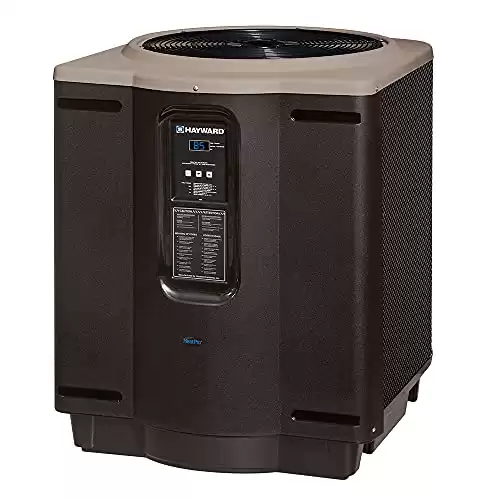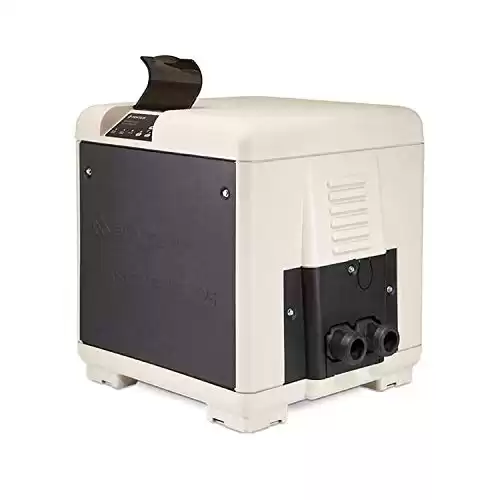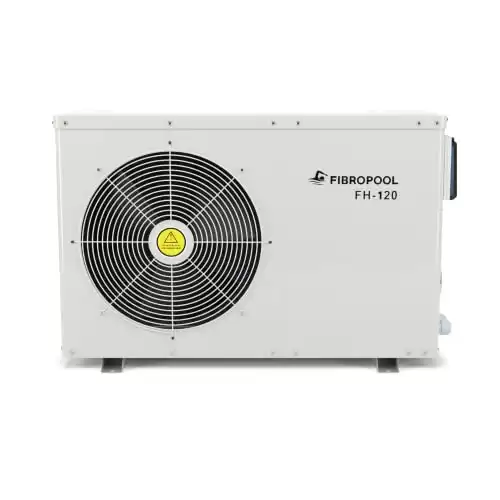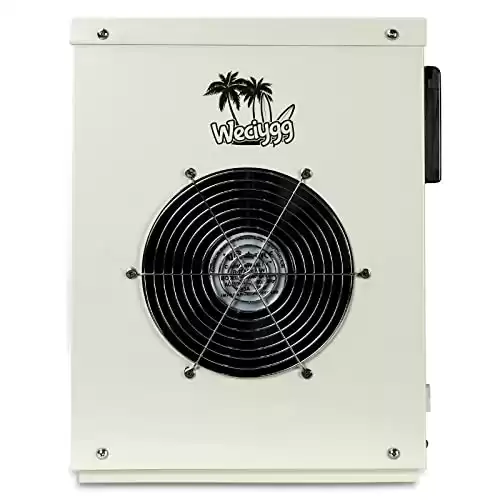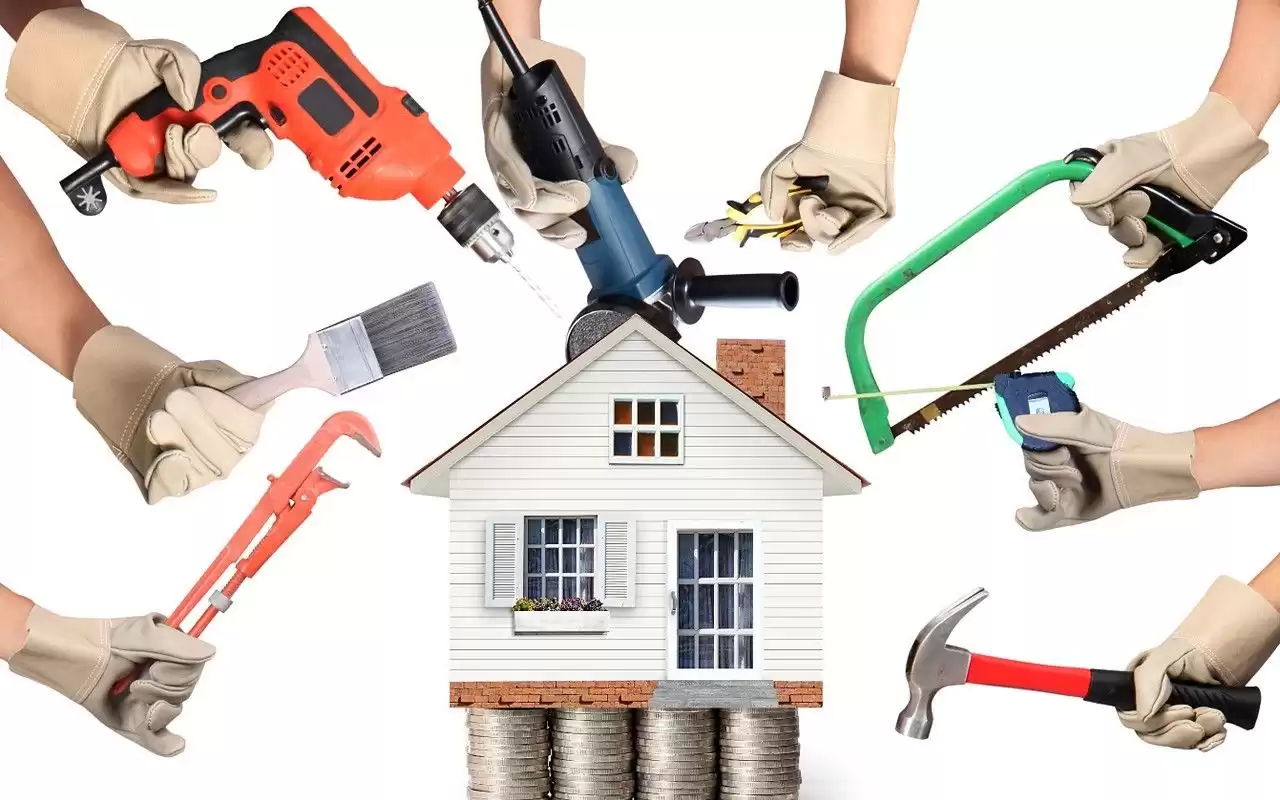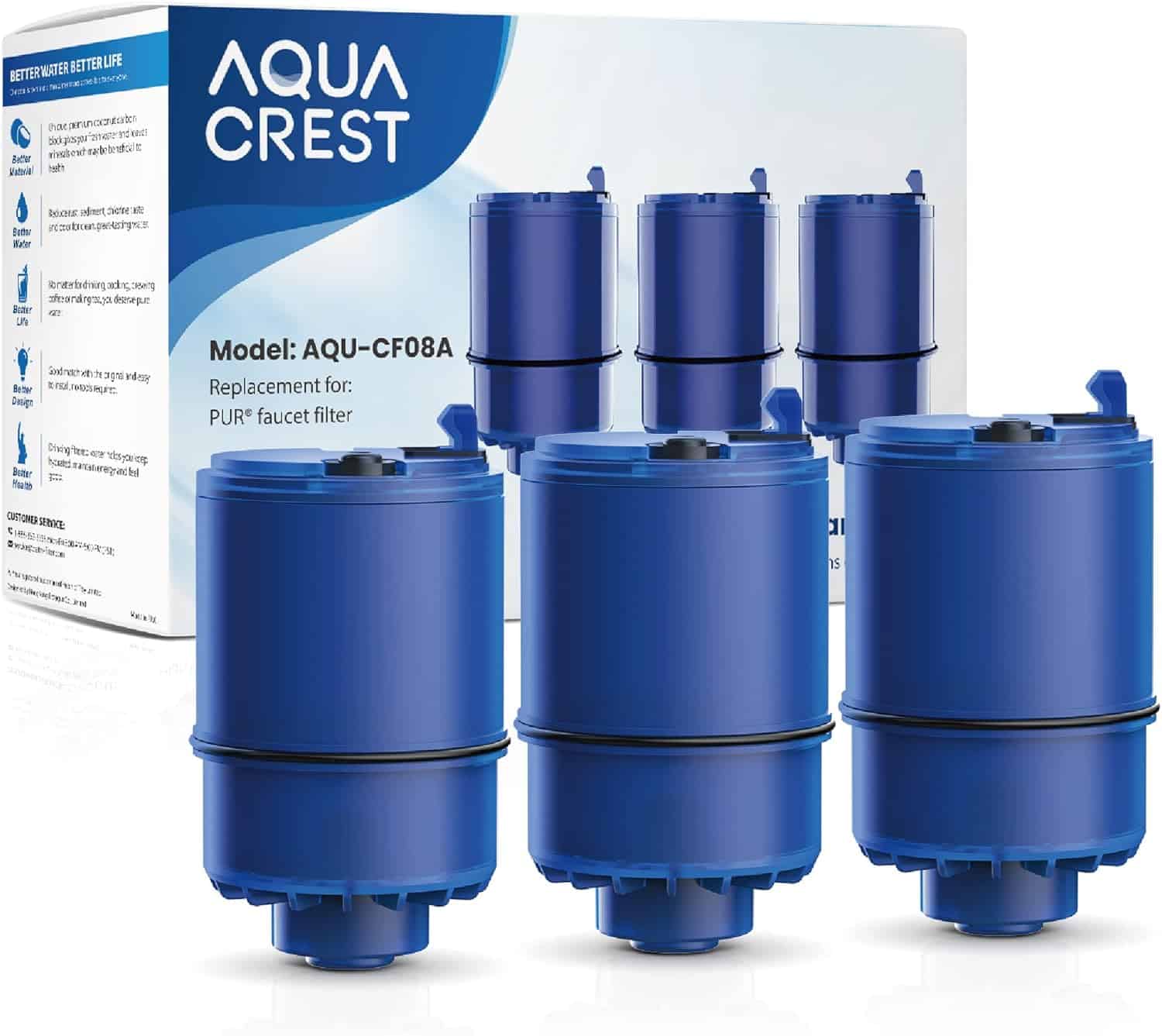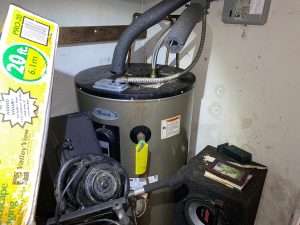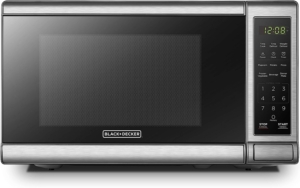From Chilly to Cozy: How to Use a Pool Heat Pump

How to Use a Pool Heat Pump: A Comprehensive Guide
The comfort of swimming in a perfectly heated pool is unmatched, but maintaining the ideal temperature can be a challenge. That’s where pool heat pumps come into play. This guide will explore the ins and outs of using a pool heat pump to ensure your swimming pool remains warm all year round.
How Pool Heat Pumps Work
To effectively use a pool heat pump, it’s essential to understand how they work and the different types available. A pool heat pump extracts heat from the surrounding air and transfers it to the pool water. Learn about the four critical components of this process: the evaporator, compressor, condenser, and expansion valve.
- Evaporator: The evaporator extracts heat from the surrounding air or ground and transfers it to the pool water. It consists of a coil or tubing through which a refrigerant flows. The refrigerant evaporates at low temperatures, absorbing heat energy from the environment. As the pool water passes through the evaporator, it absorbs this heat, warming up.
- Compressor: The compressor is the heart of the heat pump. Its primary function is to compress the evaporator’s low-pressure, low-temperature refrigerant vapor and raise its temperature and pressure. By compressing the refrigerant, the compressor increases the energy level of the heat pump system. This process allows the refrigerant to release more heat during the next stage.
- Condenser: The condenser is where the hot refrigerant vapor from the compressor releases its heat to the pool water. It consists of another coil or tubing, similar to the evaporator. As the high-pressure, high-temperature refrigerant flows through the condenser, the cooler pool water passes around it. Heat transfers from the hot refrigerant to the cooler water, raising the water temperature and cooling down the refrigerant.
- Expansion Valve: The expansion valve is a small device between the condenser and the evaporator. Its primary purpose is to regulate the flow of the refrigerant and reduce its pressure. When the high-pressure refrigerant leaves the condenser, it enters the expansion valve, restricting its flow. As a result, the pressure drops, and the refrigerant becomes a low-pressure, low-temperature vapor. This cooled refrigerant then enters the evaporator to absorb heat and continue the cycle.
Overall, the four components work together continuously to heat the pool water. The evaporator absorbs heat from the environment, the compressor raises the temperature and pressure of the refrigerant, the condenser releases heat to the pool water, and the expansion valve regulates the refrigerant flow and reduces its pressure to begin the cycle again. This process allows the pool heat pump to efficiently transfer heat from the air or ground to warm the pool water.
Types of Pool Heat Pumps
There are primarily two types of pool heat pumps available: air-source heat pumps and geothermal (ground-source) heat pumps. Let’s take a closer look at each type:
- Air-Source Heat Pumps: Air-source heat pumps are the most common and popular type of pool heat pumps. They work by extracting heat from the surrounding air and transferring it to the pool water. Here’s how they operate:
- Evaporator: The evaporator coil absorbs heat from the outdoor air. The heat pump’s fan pulls in the air, and the refrigerant inside the evaporator coil evaporates, absorbing heat energy from the air.
- Compressor: The compressor increases the temperature and pressure of the refrigerant vapor.
- Condenser: The hot refrigerant vapor releases its heat to the pool water through the condenser coil. As the water passes around the coil, it absorbs the heat, and the refrigerant cools down.
- Expansion Valve: The expansion valve reduces the pressure and temperature of the refrigerant, preparing it to enter the evaporator again and repeat the cycle.
Air-source heat pumps are efficient in moderate climates where the ambient air temperature is above freezing. They rely on the temperature differential between the air and the desired pool water temperature to operate effectively. However, their performance may decrease in colder climates.
- Geothermal (Ground-Source) Heat Pumps: Geothermal heat pumps utilize the relatively stable temperature of the ground or a water source, such as a well or lake, to heat the pool water. They offer high energy efficiency and can operate in various climates. Here’s how they work:
- Ground Loop: Geothermal heat pumps use a series of pipes buried underground or submerged in a water source. These pipes, known as the ground loop, contain a heat-transfer fluid, such as water or an antifreeze solution.
- Ground Heat Exchange: The ground loop absorbs the stable heat from the ground or water source. In winter, the ground temperature is warmer than the outdoor air temperature, allowing the heat pump to extract heat.
- Evaporator: The heat extracted from the ground or water source is transferred to the refrigerant in the evaporator.
- Compressor: The compressor increases the temperature and pressure of the refrigerant vapor.
- Condenser: The hot refrigerant vapor releases heat to the pool water through the condenser coil, similar to the air-source heat pump.
- Expansion Valve: The expansion valve reduces the pressure and temperature of the refrigerant, preparing it to re-enter the evaporator.
Geothermal heat pumps provide efficient and reliable pool heating, as the ground or water source provides a relatively constant temperature throughout the year. However, the installation cost of the ground loop system is typically higher than that of an air-source heat pump.
Air-source and geothermal heat pumps are effective and eco-friendly methods of heating pools, offering energy savings compared to traditional heating systems like electric resistance heaters or gas heaters. The choice between the two types depends on the climate, available space, budget, and desired energy efficiency.
Factors to Consider Before Purchasing a Pool Heat Pump
There are several factors to consider before investing in a pool heat pump. From pool size and location to energy efficiency ratings and noise levels, ensure you make an informed decision that aligns with your requirements and budget.
- Pool Size and Heating Requirements: Determine the size of your pool and the desired temperature increase you want to achieve. Different heat pumps have varying heating capacities, so ensure the heat pump you select is capable of adequately heating your pool.
- Climate and Ambient Air Temperature: Consider the climate and average ambient air temperature in your region. Air-source heat pumps are affected by outdoor air temperature, so if you live in a colder climate, you may need a larger capacity heat pump or consider a geothermal heat pump for more consistent performance.
- Energy Efficiency: Look for heat pumps with high energy efficiency ratings. The coefficient of performance (COP) is an important indicator, representing the heat pump’s efficiency in converting energy to heat output. Higher COP values indicate better energy efficiency. Look for heat pumps with a high COP to reduce operating costs and environmental impact.
- Noise Levels: Heat pumps generate some noise during operation. If noise is a concern for you, consider heat pumps with lower noise levels. Manufacturers often provide noise ratings, so compare different models and choose one that meets your noise preferences.
- Installation Space and Requirements: Evaluate the available space for installation. Heat pumps require adequate clearance for proper airflow and maintenance access. Consider the physical dimensions of the heat pump and ensure it can be installed comfortably in your designated location.
- Durability and Warranty: Look for heat pumps from reputable manufacturers known for producing reliable and durable products. Check the warranty provided by the manufacturer to ensure you have sufficient coverage for any potential issues or defects.
- Compatibility and Control Options: Ensure the heat pump you choose is compatible with your existing pool system, including filtration and automation systems. Additionally, consider the control options available. Some heat pumps offer advanced control features like Wi-Fi connectivity and smartphone apps, allowing you to monitor and adjust settings remotely.
- Budget and Lifecycle Costs: Consider the initial cost of the heat pump as well as the long-term operating costs. While more energy-efficient models may have a higher upfront cost, they can save you money in the long run through reduced energy consumption. Evaluate the lifecycle costs, including installation, maintenance, and energy consumption, to make an informed financial decision.
Here are the titles of the five top-selling pool heat pumps recommended:
- Hayward HP21404T HeatPro Titanium
- Pentair EC462025 MasterTemp 125
- WECIYGG Mini Swimming Pool Heat Pump 12000 BTU
- AquaCal HeatWave SuperQuiet
- FiberPool Swimming Pool Heat Pump
| Product Image | Product Name / Price / Primary Button |
|---|---|
Installing a Pool Heat Pump
Proper installation is indeed crucial to ensure the efficient functioning of your pool heat pump. Here are some steps to follow for a successful installation process:
- Choose the Right Location: Select an appropriate location for installing the heat pump. Ensure it is close to the pool equipment pad or the pool itself to minimize piping and electrical wiring lengths. The location should have sufficient space for proper airflow and maintenance access.
- Check Electrical Requirements: Review the electrical requirements specified by the manufacturer. Ensure your electrical system meets the necessary voltage, amperage, and wiring requirements for the heat pump. It’s advisable to hire a professional electrician to handle any electrical connections.
- Prepare the Foundation: Create a stable and level foundation or pad to support the heat pump. Follow the manufacturer’s guidelines for the recommended pad dimensions and materials. A solid foundation helps reduce vibration and noise and ensures proper operation.
- Connect Plumbing: Install the necessary plumbing connections between the heat pump and the pool’s filtration system. Follow the manufacturer’s instructions for proper pipe sizing, valve placements, and any additional fittings required. Proper plumbing ensures optimal water flow and efficiency.
- Electrical Wiring: Connect the heat pump to the electrical power source following local electrical codes and regulations. Again, it’s recommended to hire a licensed electrician to handle the wiring connections for safety and compliance.
- Ventilation and Airflow: Ensure that the heat pump has sufficient ventilation and airflow. Maintain the recommended clearances around the unit to allow for proper intake and exhaust airflow. Adequate airflow helps prevent overheating and optimizes the heat pump’s performance.
- Test and Start-Up: Once the installation is complete, thoroughly inspect the entire system for any leaks, loose connections, or irregularities. Confirm that all electrical and plumbing connections are secure. Fill the pool with water and start the heat pump according to the manufacturer’s instructions. Monitor the initial startup to ensure everything is functioning properly.
- Regular Maintenance: To maintain optimal performance, schedule regular maintenance for your pool heat pump. This may include cleaning or replacing air filters, inspecting and cleaning coils, checking refrigerant levels, and overall system inspections. Follow the manufacturer’s maintenance guidelines to keep the heat pump in good working condition.
It’s important to note that while these steps provide a general overview of the installation process, it’s always best to consult the specific installation instructions provided by the manufacturer of your pool heat pump. If you’re unsure about any aspect of the installation, it’s recommended to seek professional assistance from a qualified HVAC technician or pool contractor. They have the expertise and experience to ensure a proper and efficient installation.
Operating a Pool Heat Pump
- Set the Desired Temperature: Use the control panel or digital interface on your heat pump to set the desired temperature for your pool. It’s recommended to set the temperature to a comfortable level that suits your preferences and usage patterns. Avoid excessively high temperatures, as they can increase energy consumption.
- Optimal Run Time: Determine the optimal run time for your pool heat pump based on factors such as pool size, ambient temperature, and desired water temperature. It’s generally more energy-efficient to run the heat pump for longer periods at lower power settings rather than running it at high power for shorter intervals. Experiment and adjust the run time to find the balance between comfort and energy efficiency.
- Use a Pool Cover: Investing in a pool cover is highly recommended. When the pool is not in use, covering it helps to retain heat and minimize heat loss due to evaporation. By reducing heat loss, you can lessen the workload on the heat pump and conserve energy.
- Manage Airflow and Ventilation: Ensure that the heat pump has adequate airflow and ventilation. Clear any debris or obstructions around the unit to allow proper intake and exhaust airflow. Restricted airflow can hamper the heat pump’s efficiency and performance.
- Monitor and Adjust: Regularly monitor the pool water temperature and adjust the heat pump settings as needed. For example, during periods of cooler weather, you may need to increase the temperature setting or extend the run time to maintain the desired pool temperature. Conversely, in warmer weather, you can lower the temperature setting or reduce the run time to conserve energy.
- Regular Maintenance: Follow the manufacturer’s maintenance guidelines for your pool heat pump. Regularly clean or replace air filters to ensure proper airflow and efficiency. Inspect and clean the evaporator and condenser coils to remove any dirt or debris that can impede heat transfer. Check the refrigerant levels and perform any other recommended maintenance tasks to keep the heat pump operating efficiently.
- Seasonal Shutdown: If you don’t plan to use your pool during certain seasons or for an extended period, consider shutting down the heat pump. Follow the manufacturer’s instructions for proper shutdown procedures, which may include draining water from the unit and protecting it from freezing temperatures.
Troubleshooting Common Issues with Heat Pumps
Even with proper maintenance, issues may arise. Here are some common problems and troubleshooting steps.
Identifying and Addressing Reduced Heating Efficiency
Learn how to identify potential causes of reduced heating efficiency, such as clogged filters, refrigerant leaks, or faulty components. Troubleshoot these issues and know when to seek professional assistance.
Dealing with Heat Pump Noises or Vibrations
Unusual noises or vibrations can indicate underlying issues with your heat pump. Discover common causes and remedies for noise and vibration problems to ensure smooth and quiet operation.
Troubleshooting Electrical or Control Panel Problems
If you encounter electrical or control panel issues, it’s crucial to address them promptly. Learn how to identify common electrical problems and how to troubleshoot or seek professional help safely.
Maintenance and Care
Proper maintenance is essential to keep your pool heat pump in optimal condition.
Regular Cleaning and Maintenance Tasks
Follow a maintenance routine that includes cleaning the evaporator and condenser coils, checking refrigerant levels, and inspecting electrical connections. Learn how to perform these tasks safely and efficiently.
Seasonal Maintenance Checklist
Prepare your pool heat pump for each season by performing specific maintenance tasks. From winterization to summer startup, ensure your heat pump is ready to handle changing weather conditions.
Professional Servicing and Inspections
Consider scheduling professional servicing and inspections to ensure your pool heat pump is thoroughly checked and maintained by experts. Understand the recommended frequency for professional maintenance visits.
1. How does a pool heat pump work?
Answer: A pool heat pump uses electricity to extract heat from the surrounding air and transfer it to the pool water using a refrigeration cycle. The warm air passes through the evaporator coil, where a refrigerant absorbs the heat. The refrigerant is then compressed, which raises its temperature further. Finally, the hot refrigerant releases heat into the pool water through the condenser coil.
2. What is the optimal temperature range for a heated pool?
Answer: The optimal temperature range for a heated pool typically falls between 78°F (25°C) and 82°F (28°C). However, the ideal temperature can vary depending on personal preference, intended pool usage (e.g., exercise or relaxation), and local climate conditions.
3. Can a pool heat pump be used for heating and cooling?
Answer: No, a pool heat pump is designed explicitly for heating pool water and cannot be used for cooling. If you require heating and cooling capabilities, you may need to consider a different type of pool system, such as a reversible heat pump or a pool heater with cooling functionality.
4. How long can a pool heat pump heat pump heat the pool?
Answer: The heating time can vary depending on factors such as the size of the pool, the desired temperature increase, and the ambient air temperature. On average, a pool heat pump can take around 24 to 72 hours to raise the water temperature by 1-2°F (0.5-1°C). Patience is critical when using a heat pump, as it gradually increases the pool temperature.
5. How do I adjust the temperature settings on my pool heat pump?
Answer: Each pool heat pump model may have slightly different controls, but generally, you can adjust the temperature settings through the control panel or digital interface on the heat pump. Refer to the manufacturer’s instructions for specific details on changing the temperature settings and navigating the control panel.
6. Are pool heat pumps energy-efficient?
Answer: Yes, pool heat pumps are considered energy-efficient heating solutions for pools. They operate by transferring heat rather than generating it, which makes them more energy-efficient than traditional pool heaters. However, choosing an appropriately sized and well-maintained heat pump is essential as considering factors such as insulation and usage patterns to optimize energy efficiency.
7. Can I use a pool heat pump with an existing pool heater?
Answer: Yes, using a pool heat pump in conjunction with an existing pool heater is possible. This setup, known as a hybrid system, allows you to switch between the heat pump and the heater based on factors like weather conditions, energy costs, and desired pool temperature. Consult a pool professional to ensure compatibility and proper installation.
8. What maintenance tasks are required for a pool heat pump?
Answer: Regular maintenance is essential for optimal performance. Tasks may include cleaning or replacing air filters, inspecting and cleaning the evaporator and condenser coils, checking refrigerant levels, and ensuring proper airflow around the heat pump. It’s also recommended to schedule professional servicing and inspections at least once a year.
9. Can I use a pool heat pump in colder climates?
Answer: Pool heat pumps suit many climates, including colder regions. However, their heating capacity may be affected by lower air temperatures. In icy conditions, the heat pump may require additional time to heat the pool or may not be able to maintain higher temperatures. Supplementing insulation and considering a heat pump for colder climates can help mitigate this issue.
10. How do I troubleshoot common issues with a pool heat pump?
Answer: When troubleshooting issues with a pool heat pump, start by checking power connections,
circuit breakers, and filters for blockages or obstructions. Additionally, ensure proper airflow around the heat pump and clean the coils if necessary. If problems persist, consult the manufacturer’s troubleshooting guide or seek professional assistance from a pool technician familiar with heat pump systems.
By understanding how to use a pool heat pump effectively, you can maintain a comfortable swimming environment while optimizing energy efficiency. Remember, proper installation, operation, and maintenance are essential for the long-term performance of your pool heat pump. Seek professional assistance if needed.

